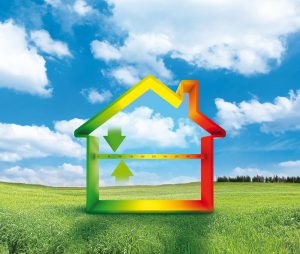 Have you ever thought about doing a home energy audit?
Have you ever thought about doing a home energy audit?
A home energy audit is an inspection of your house to determine where there is energy loss. A large amount of energy loss can lead to a loss of money. An inspection is often the first step in making your home more efficient, thus saving you money.
The results of the audit can help you find the problems and work to find the best solutions. Call in a professional – or an energy auditor – to conduct the audit, often called an energy assessment. It will determine how much energy your home consumes. Oftentimes, simple and inexpensive measures can be taken to help save energy and money.
RELATED: How to find and seal air leaks in your home
Auditors check the following by using a variety of techniques and proper equipment:
- Check for leaks
- Examine insulation
- Inspect the furnace and duct work
- Perform a blower door test using an infrared camera
- Conduct structure tests by using thermal monitoring devices
Do-It-Yourself audits
Energy Star offers an online audit called the Energy Yardstick. Simply fill out all the pertinent information online and have the past 12 months of utility bills handy. If you do not have a copy of your utility bills, contact your utility company for a 12-month summary. This audit compares your home’s energy efficiency to similar homes and provides recommendations. You also can check with your utility company to see if it offers free or discounted energy audits to customers.
RELATED: 10 ways to keep your home cool this summer
Here are a few energy savings tips for the spring and summer months when the weather is warmer:
- Use your windows to bring in cool air and keep out heat.
- Look into natural ventilation.
- Install window shades or blinds to keep the sun out.
- Operate thermostats efficiently by setting the thermostat as high as comfortably possible during warm summer days.
- Install a programmable thermostat to control your home’s temperature throughout the day.
- Do a home energy audit to assess your home’s energy efficiency. Once you receive the results, make the necessary changes and improvements.
- Unless you absolutely need them, turn off incandescent lights and heat-generating appliances.
- Replace incandescent bulbs with compact fluorescent bulbs; they produce the same light but use a fifth of the energy and heat.
- Avoid heat-generating activities, such as cooking, on hot days or during the hottest part of the day. If you are cooking, use a range fan to vent the hot air out of your house.
- Reduce indoor humidity by minimizing mid-day washing and drying of clothes, showering, and cooking. Lower humidity can make your home feel cooler.
Other Articles That Might Interest You
10 of the most frequently asked HVAC questions
How to know if you should have your air conditioner repaired or replaced
10 HVAC myths debunked
Does adjusting the thermostat up or down really save you money?
